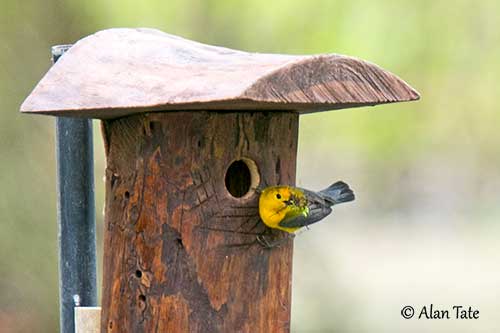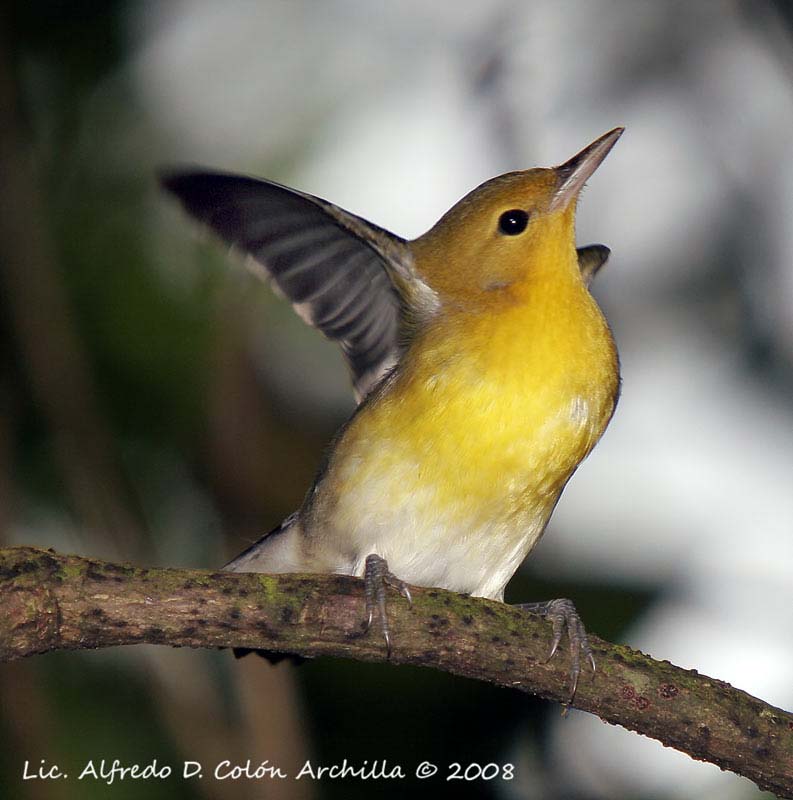
Prothonotary Warbler
Protonotaria citrea
Passeriforme Order - Parulidae Family
BIOMETRICS:
Length: 14 cm ; Wingspan: 22 cm ; Weight: 14 g
LONGEVITY: 4 years
DESCRIPTION:
Prothonotary warbler is a large warbler. It is plump, short-tailed and very long-billed. Eyes also are large, dark and prominent.
HABITAT:
Prothonotary warbler is fairly common. Usually, it breeds in a selection of a low sites along streams or surrounded, by sluggish or stagnant water. It breeds also along large lakes and rivers, or in swampy lowland forests subject to flooding.
It winters in a variety of moist areas, but also in dryer areas, mangroves swamps and coastal tropical forests.
RANGE:
Prothonotary warbler breeds from S Minnesota and S Ontario, southward to Central Texas and Florida.
It winters in Central America and northern South America.
BEHAVIOUR:
Prothonotary warbler nests in holes, as Lucy’s warbler (vermivora luciae). They are the only two warblers that breed in cavities and crannies.
FLIGHT:
Prothonotary warbler performs relatively short flights. They make a short hop across the Gulf, to land in Central and South America, but this species is a long-distance migrant.
REPRODUCTION:
Prothonotary warbler’s nest is located in cavities in trees, over or near water, in natural cavities or abandoned Woodpeckers holes in stumps and rotten wood. Nest can be built up to 2 to 12 feet above the ground, generally 5 feet. They also use artificial nest-boxes.
Male makes dummy nest, but the real nest is built only by female. To prepare the site, female further excavates a cavity. It fills the entrance hole with nesting materials. Nest is made with moss, lichens, dry leaves, small twigs and bark strips. It is lined with fine grasses and rootlets.
Photographers:
Alfredo Colón
Puerto Rico Wildlife
Tom Grey
Tom Grey's Bird Pictures
Alan & Ann Tate
AA Bird Photography
Sources:
FIELD GUIDE TO THE BIRDS OF NORTH AMERICA by National Geographic Society - National Geographic Society - ISBN: 0792274512
THE HANDBOOK OF BIRD IDENTIFICATION FOR EUROPE AND THE WESTERN PALEARCTIC by Mark Beaman, Steve Madge - C.Helm - ISBN: 0713639601
L’ENCYCLOPEDIE MONDIALE DES OISEAUX - Dr Christopher M. Perrins - BORDAS - ISBN: 2040185607
All About Birds (Cornell Lab of Ornithology)
Wikipedia (Wikipedia, The Free Encyclopedia)
What Bird-The ultimate Bird Guide (Mitchell Waite)
Bird Web (Seattle Audubon Society)
Animal Diversity Web (University of Michigan Museum of Zoology)

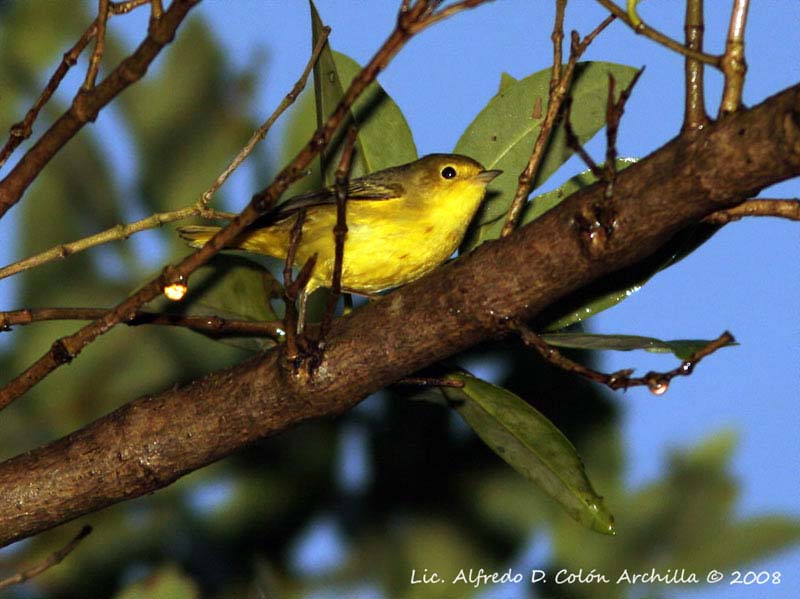
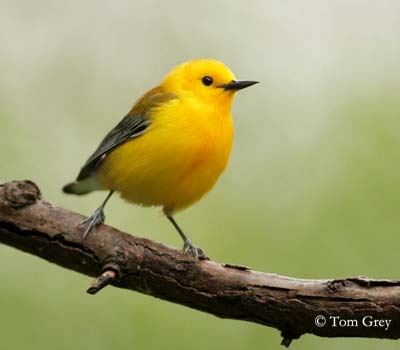
Prothonotary warbler male has golden yellow head and under parts, sometimes almost orange, becoming fader to white undertail coverts. Wings are rather blue-grey, without wing bars. Its blue-grey tail shows large white patches.
Female is duller than male, with head less golden.
Immature resembles adult, but duller, and more greenish on back and head.
The name ‘Prothonotary” refers to clerks in the Roman Catholic church, whose robes were bright yellow.
VOICE: SOUNDS BY XENO-CANTO
Melodious song of Prothonotary warbler is a series of loud, ringing “zweet” notes. It gives a dry “chip” note and buzzy flight call.
With a strong voice, it utters 7 to 12 small sharp calls, or a more liquid song while hovering on the spot, with fanned wings.
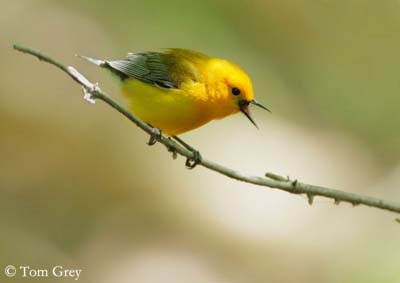
The female lays 4 to 6 glossy white eggs, with a slightly yellow or cream tinge, heavily marked with reddish brown and purplish grey spots. Incubation lasts about 12 to 14 days, by female alone. Male often feeds the female at nest while it defends the nest. Chicks are altricial and female broods them for the first few days while male feeds both young and female. Both parents feed and protect the young, until they fledge, at about 11 days. After fledging, male continues to feed the young, while female prepares a second brood (only in the South. It is very rare in the North where only one brood is produced).
This species can breed at the end of the first year.
DIET:
Prothonotary warbler feeds mostly on insects, caterpillars, flies, ants, beetles, midges, mayflies and larvae of aquatic insects, and spiders. It also eats snails during breeding season. During winter, it may eat fruits, seeds and nectar, and some insects.
PROTECTION / THREATS / STATUS:
Prothonotary warbler is a host of Brown-headed cowbird. Combined effects of parasitism, habitat loss and competition for nest sites, are important threats for this species.
Porto Rico : Reinita Anaranjada
Fr: Paruline orangée
All : Zitronenwaldsänger
Esp : Chipe Anaranjado
Ital : Protonotaria citrina
Nd : Citroenzanger
Russe : Лимонный певун
Sd : Gyllenskogssångare
